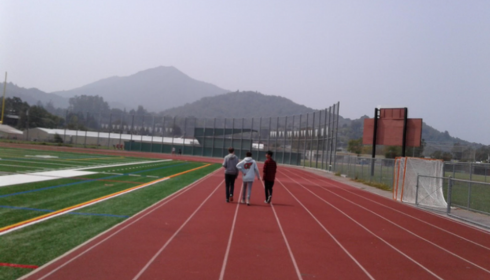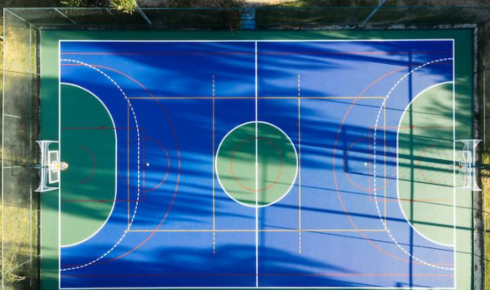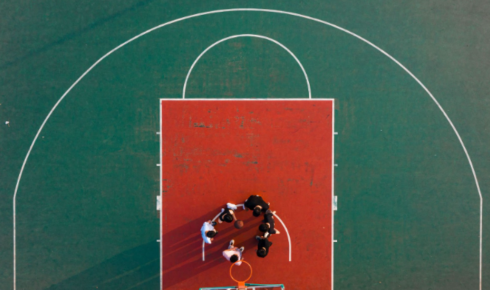
In urban landscapes and residential spaces, walking tracks are becoming an essential feature—whether it’s for daily strolls, morning jogs, or senior fitness. If you’re planning to install one, understanding the cost and types of walking track flooring is crucial. Choosing the right material not only impacts user comfort and safety but also determines the durability and maintenance requirements of the track.
In this guide, we break down the walking track materials, compare prices, and highlight important factors like dimensions and usage scenarios to help you make the best decision
.
Why Walking Track Flooring Matters
Unlike generic pathways, dedicated walking tracks are designed to reduce joint impact, resist wear from foot traffic, and maintain grip in wet or dry conditions. Good walking track flooring should offer:
- Cushioning and slip resistance
- Long-term durability
- UV and weather resistance (for outdoor tracks)
- Low maintenance
- Cost-efficiency
Whether you’re designing a track for a park, apartment complex, school, or hospital, selecting the right surface material will determine its long-term performance.
Top Walking Track Materials
1. Synthetic Acrylic Flooring
This is one of the most common and cost-effective options used in outdoor walking tracks.
- Features:
- UV-resistant and slip-proof
- Available in multiple colors
- Requires a concrete or asphalt base
- UV-resistant and slip-proof
- Ideal For: Parks, society tracks, school grounds
- Pros: Affordable, weather-resistant, low maintenance
- Cons: Limited shock absorption compared to rubber flooring
2. EPDM Rubber Flooring
EPDM (Ethylene Propylene Diene Monomer) is a high-performance rubber surface used in walking and jogging tracks.
- Features:
- Superior cushioning and slip resistance
- Excellent performance in all weather
- Available in granules or roll format
- Superior cushioning and slip resistance
- Ideal For: Jogging tracks, health parks, elderly-friendly zones
- Pros: Comfortable, long-lasting, easy on joints
- Cons: Slightly higher cost, professional installation required
3. PU (Polyurethane) Flooring
PU flooring offers a seamless, cushioned surface and is great for high-traffic, multi-use areas.
- Features:
- Durable, weatherproof, and seamless
- Can handle both walking and sports activity
- Durable, weatherproof, and seamless
- Ideal For: Commercial complexes, stadium tracks, and multi-sport zones
- Pros: Durable, low maintenance, multipurpose
- Cons: Higher installation cost, needs skilled labor
Cost Factors That Affect Walking Track Pricing
Understanding what drives the total cost of a walking track helps in better budgeting. Here are key factors that impact pricing:
1. Surface Area
The size of the walking track directly affects the volume of materials and labor. Most tracks range from 1.5 to 3 meters wide depending on foot traffic expectations.
2. Base Construction
Materials like acrylic or PU require a smooth, level base—typically concrete or asphalt. Preparing this sub-layer adds to your cost if not already present.
3. Location and Accessibility
Projects in difficult terrain, remote areas, or with limited access may incur higher labor and transportation charges.
4. Drainage and Edging
Good drainage is essential for outdoor tracks. Installing slope-adjusted bases or PVC side curbing increases the cost slightly but improves longevity.
5. Customization
Colors, logos, line markings, or anti-microbial coatings can add ₹50–₹200 per sq. meter to your budget.
Recommended Walking Track Dimensions
To plan efficiently, consider the standard dimensions for walking tracks:
| Track Type | Recommended Width | Surface Area per 100m Track |
| Single-Person Use | 1.5 meters | 150 sq. meters |
| Dual Lane (Residential) | 2 meters | 200 sq. meters |
| Public or Commercial Track | 2.5–3 meters | 250–300 sq. meters |
This helps estimate both the walking track flooring price and the amount of material needed.
Installation Tips for Long-Lasting Walking Tracks
- Sub-Base Must Be Solid and Level
Always install over a compacted and cured concrete or asphalt base. Irregular bases reduce the lifespan of the flooring. - Consider Drainage Slopes
Maintain a slope of 1–2% for water drainage. This prevents pooling and surface damage. - Proper Curing Time
For PU and acrylic surfaces, allow 48–72 hours before using the track. - Regular Maintenance
Sweep frequently and wash the surface using non-abrasive cleaners. Inspect joints or edges every few months.
Best Walking Track Material by Use Case
| Location | Recommended Material | Why |
| Residential Societies | Synthetic Acrylic Flooring | Affordable, slip-resistant, low upkeep |
| City Parks & Jogging Areas | EPDM Rubber Flooring | Comfortable, all-weather, safe for joints |
| Health Facilities | PU or Rubber Flooring | High cushioning, seamless, hygienic |
| Multi-Sport Zones | PU Flooring | Multipurpose, long-lasting, UV-resistant |
Conclusion
A well-planned walking track not only promotes fitness but also adds real estate and recreational value. While synthetic acrylic is the go-to choice for budget-friendly outdoor projects, EPDM and PU offer better comfort and lifespan for professional or high-use installations.
By understanding the walking track flooring price, materials, and application scenarios, you can build a track that’s both cost-effective and functional. Whether it’s a society pathway or a public health trail, the right surface ensures safe steps for years to come.


